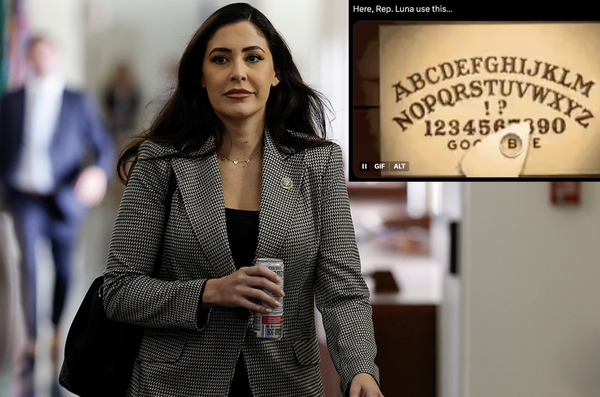
Key takeaways
- IRS Form 8832 is used for Entity Classification Election, allowing businesses to choose their federal tax status. For example, an LLC can switch to a different tax status, such as a C corporation or an S corporation.
- C corporations can yield significant tax benefits, including potential lower tax rates, ability to offer stock types, employee benefits, liability protection, and business continuity. However, these benefits must be weighed against the possible double taxation of the corporation's profits.
- S corporations, suitable for smaller businesses, prevent double taxation encountered by C corporations by passing the company's income, losses, deductions, and credits to shareholders to report on their personal tax returns.
- Form 8832 allows individual or multi-member LLCs to revert back to a simpler tax structure like a sole proprietorship or a partnership. Though it reduces paperwork, it also means saying goodbye to personal liability protection offered by an LLC or corporate structure.
As your business grows and evolves, so may its tax needs. Different business structures have distinct tax benefits and obligations. If you're wanting to change your business's tax status, you'll need to familiarize yourself with IRS Form 8832. This form offers a way for entities to elect how they are classified for federal tax purposes, opening avenues to potential tax savings.
Options for foreign entities
If you're in charge of a foreign business and wish to run your company in the United States, you can select your business structure on Form 8832, too. Different business types apply to foreign entities, and each has different tax rules.
Here are the main types of business structures available:
- Association taxable as a corporation: If you choose this, your business is treated like a corporation for US tax purposes. This can offer some protection because the business is considered separate from the people who own it. One thing to consider is that the business's profits might be taxed twice - both when the business makes a profit and when the profit is given out to the owners.
- Foreign partnership: This might be your choice if you want a simpler business structure that also might have lower taxes. In a partnership, the business's profits and losses are reported directly by the partners on their individual tax returns. But remember, partners from outside the US might need to pay US income tax on their share of the business's profits.
- Disregarded as a separate entity: If you're the only owner of your foreign business, you can elect to be overlooked as a separate business entity. This means that you and your business are thought of as one and the same when it comes to taxes. This type of business is the simplest when it comes to tax rules, but it doesn't provide personal protection if your business is sued or has debts.
Now, let's break down how to fill out Form 8832.
How to fill out Form 8832
Getting started with Form 8832 is like most IRS forms, with the basics: you'll input your business name, address, and Employer Identification Number (EIN).
Then, you'll find sections designed to gather more information about your business, your desired taxation, and whether you're making this election late. More on filing deadlines when we review each section of Form 8832.
Generally, the form is estimated to take less than 20 minutes to complete.
Now, let's take a closer look at each section:
Part I: Election Information
In Part I of Form 8832 - Election Information - you’ll provide specific details about your business and the tax classification election you want to make. This part comprises lines 1 through 6. Here's a closer look at what each line is for:
- Header Information:
- Legal name of your business.
- Business's Employer Identification Number (EIN).
- Address associated with your business
- Line 1: This is where you'll choose the type of election you'd like to make by checking one of the boxes.
- Line 2: If your business is an LLC that has been previously treated as a partnership, fill in the date it first started to be treated as such.
- Line 3: This line is for the information of the entity that was treated as a partnership (if applicable). You'll need to put the EIN of that entity and the date it ceased to exist.
Now, let's look specifically at what happens if you miss the deadline for making this election.
Part II: Late Election Relief
Sometimes, despite best efforts, deadlines can be missed. If that's the case with your entity classification selection, don't worry. Part II of Form 8832 - Late Election Relief is there for such scenarios.
- Line 7: Here, you'll explain why you missed the filing deadline. The IRS will want to know the reasons behind your delayed filing. Simply provide a detailed, truthful explanation.
- On the right side of Line 7, you'll see a space for signatures. Who signs depends on the impact of this late election on federal tax returns:
- If no tax return due date is affected OR the due date hasn’t passed, all members of the entity need to sign.
- If a due date is affected and has passed, then an individual with the authority to make the election must provide a signature.
And that's it for Part II. Even if you've slipped past the deadline, the IRS provides a way to make your entity classification selection with Form 8832.
TurboTax Tip: You can only file Form 8832 through the mail - it can't be done electronically. It’s also important to remember the 60-month limitation rule: after switching a business's tax status, you can’t switch it again for another 60 months.
Filing Form 8832
When it comes to filing Form 8832, it's important to know that this form cannot be submitted electronically; you must mail it. The exact mailing address depends on the location of your business in the United States.
You'll find the specific mailing address you need to use in the instructions that accompany Form 8832. These instructions can vary depending on your business's location, so it's important to refer to the latest version of the form for the most accurate address.
Before you seal the envelope, make sure you've included any necessary attachments that might be required. This could include things like consent statements from all members or shareholders if you're electing to be classified as an S corporation, for example.
60-month limitation rule
When your business chooses a new tax class, keep in mind the 60-month limitation rule. This rule means that if you've switched your business's tax status, you won't be able to switch it again for another 60 months, or five years. This waiting period is something to think about because it means you'll need to stick with your decision for a while before you can make another change.
Why does the 60-month rule exist?
This rule helps keep things steady. It's there to stop businesses from constantly changing their tax status just to get the best tax deal at any given time. Flipping between different classifications could lead to tricky tax situations and make more work for the tax authorities. By setting a five-year limit, it encourages businesses to think carefully and plan ahead when they pick a tax status.
Exceptions to the 60-month rule
Even though the 60-month rule is pretty strict, there are a few times when you can switch your classification sooner:
- Mistake of fact: If you made a mistake when you chose your classification, and you catch it within six months, you might be able to change your election. A mistake could be something like not understanding the tax rules correctly. If the IRS sees you made an honest mistake, they might let you change your status without waiting for the full 60 months.
- Ownership change: If new people come in and end up owning more than 50% of your business, this is a big change. Big changes sometimes need new tax setups. That's why there's a rule saying that if the ownership of your business changes a lot, you can pick a new tax status to match the new situation.
With TurboTax Live Business, get unlimited expert help while you do your taxes, or let a tax expert file completely for you, start to finish. Get direct access to small business tax experts who are up to date with the latest federal, state and local taxes. Small business owners get access to unlimited, year-round advice and answers at no extra cost, maximize credits and deductions, and a 100% Accurate, Expert Approved guarantee.







